Study: Local TV is the Biggest Influencer of Voter Decisions

The 2016 presidential campaign is in full swing, and with critical March primaries looming, the campaigns are pulling no punches either on the trail, in debates or on the airwaves. With a variety of media outlets and an assortment of candidates out there, knowing which advertising platform actually influences voters and moves them to cast their votes is essential to a winning campaign strategy.
Luckily, as voters consider the options, a new report has done the legwork for political strategists and it turns out that no other platform has more impact—or is more trusted—than broadcast television.
According to the new Voter Funnel study from GfK, which measured the actions taken as a result of being exposed to specific types of political advertising, television was the most influential medium—at every step—of the decision-making process.
By applying a consumer purchase funnel model to a sampling of voters from the November election, this study provided telling insights into the power of every type of advertising medium (TV, digital, print, billboards, direct mail, and radio) as voters went through a series of steps (awareness, interest, get more info, consider voting, vote) in evaluating and determining who would get their vote.
The results easily refute the hype that digital advertising will overtake TV as the most impactful political advertising medium. Instead, the results effectively demonstrate the power that TV, especially local broadcast TV, has on voters across all age groups.
70 percent of respondents rated TV as the most important medium for issue awareness (step one in the voter funnel) and this trend continued as voters went through the next four steps in the decision making process—even at the tail end of the decision process, 51% cited TV as most important in getting them to pull the lever, almost 9x the respondents citing social media. TV’s dominance was evident in the 18-34 age group as well as for voters 35+.
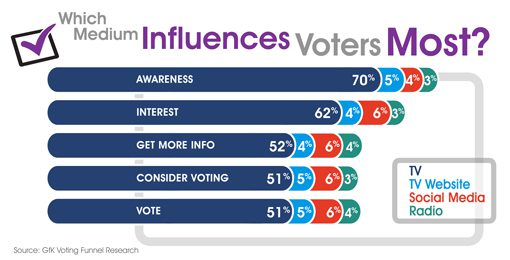
It’s interesting to note that TV also helps to drive traffic to other media, with 70 percent of the respondents taking an action in response to seeing a political ad on TV. Of those actions, 31 percent discussed the candidate’s ad with others and 26 percent went online to learn more about the candidate.
Local TV’s digital assets also performed well, with 64 percent of voters saying that they visited a local broadcast station’s website for local news—compared to just 11 percent turning to social media for information.
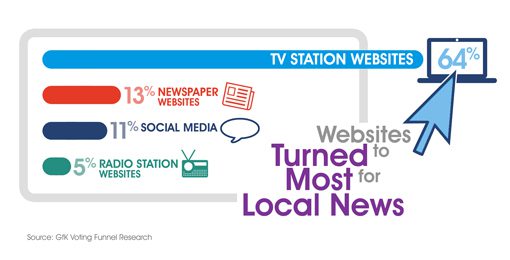
Moreover, while they were on that local station’s site, 76 percent of respondents viewed the video ads on the page. TV clearly helps drive audiences to online content and we agree that digital should be used to supplement—but not lead—an advertising strategy.
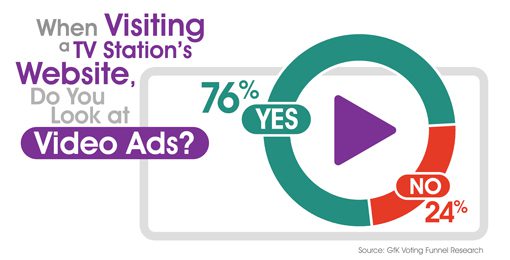
Local broadcast TV is more than just an effective way to get your message out to voters—it’s also the most credible. When voters were asked which platform they trusted the most for information, 84 percent of respondents turned to local broadcast TV, 70 percent cited cable TV while only 41 percent listed social media. This was evident across all ages, genders and political affiliations.
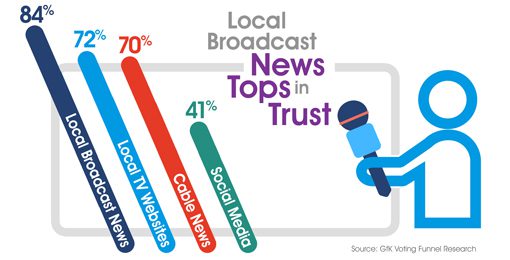
Despite new and expanding technologies, advertising on local broadcast TV remains the most impactful way to talk to voters. Television drives political discussions and propels voters to learn more—and to act. There is no denying that winning campaigns should make broadcast TV a vital component of their marketing strategy.
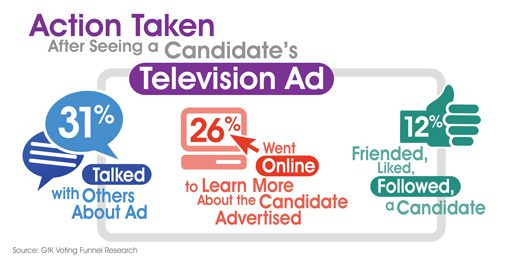
As part of TVB’s We Get Voters campaign, we are continually providing new resources and impactful information as it relates to political advertising. Studying voter actions and what influences those actions allows us to better help campaigns and their strategists effectively reach their target audiences. As this latest research proves, local broadcast TV continues to be the most powerful tool for political campaigns.
